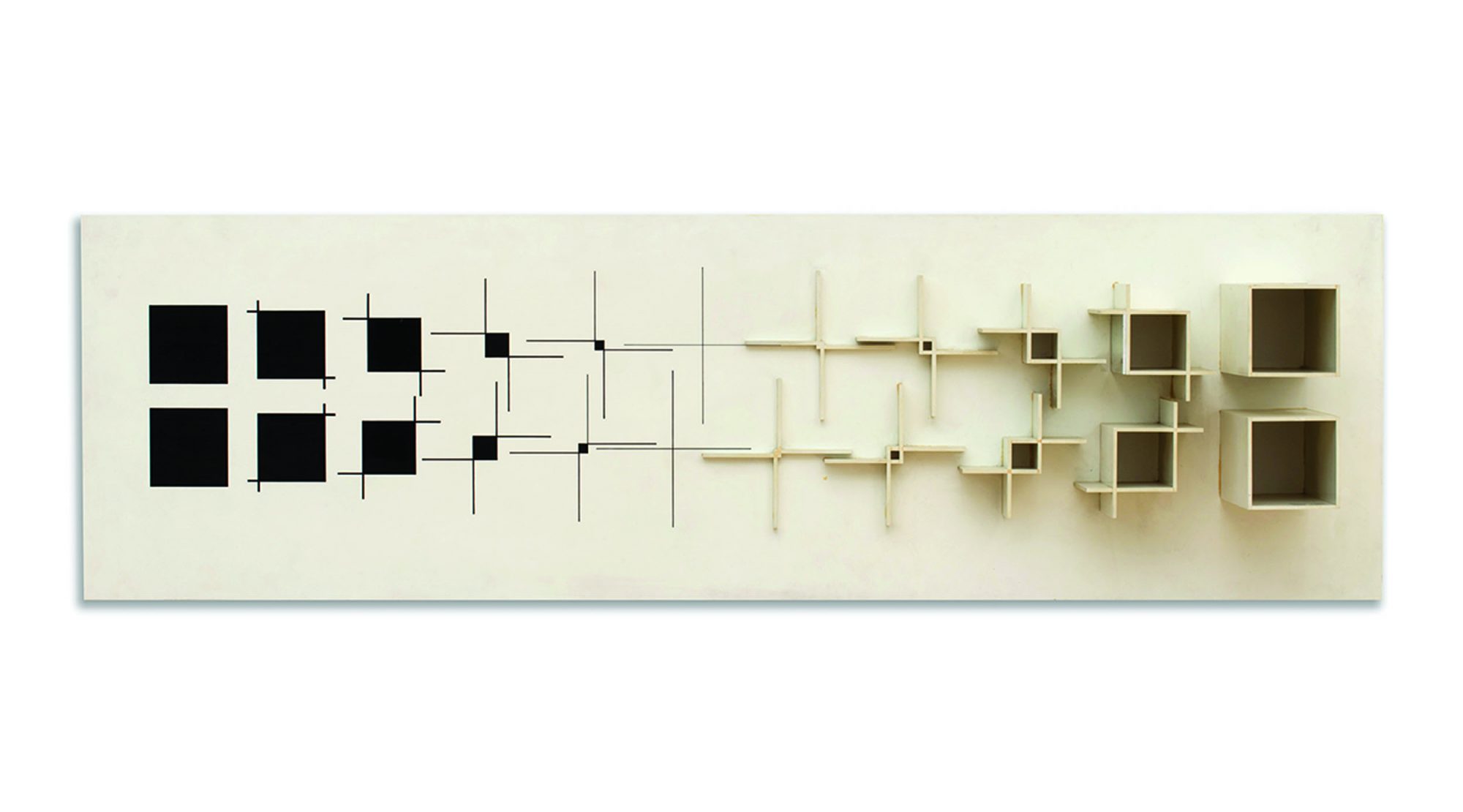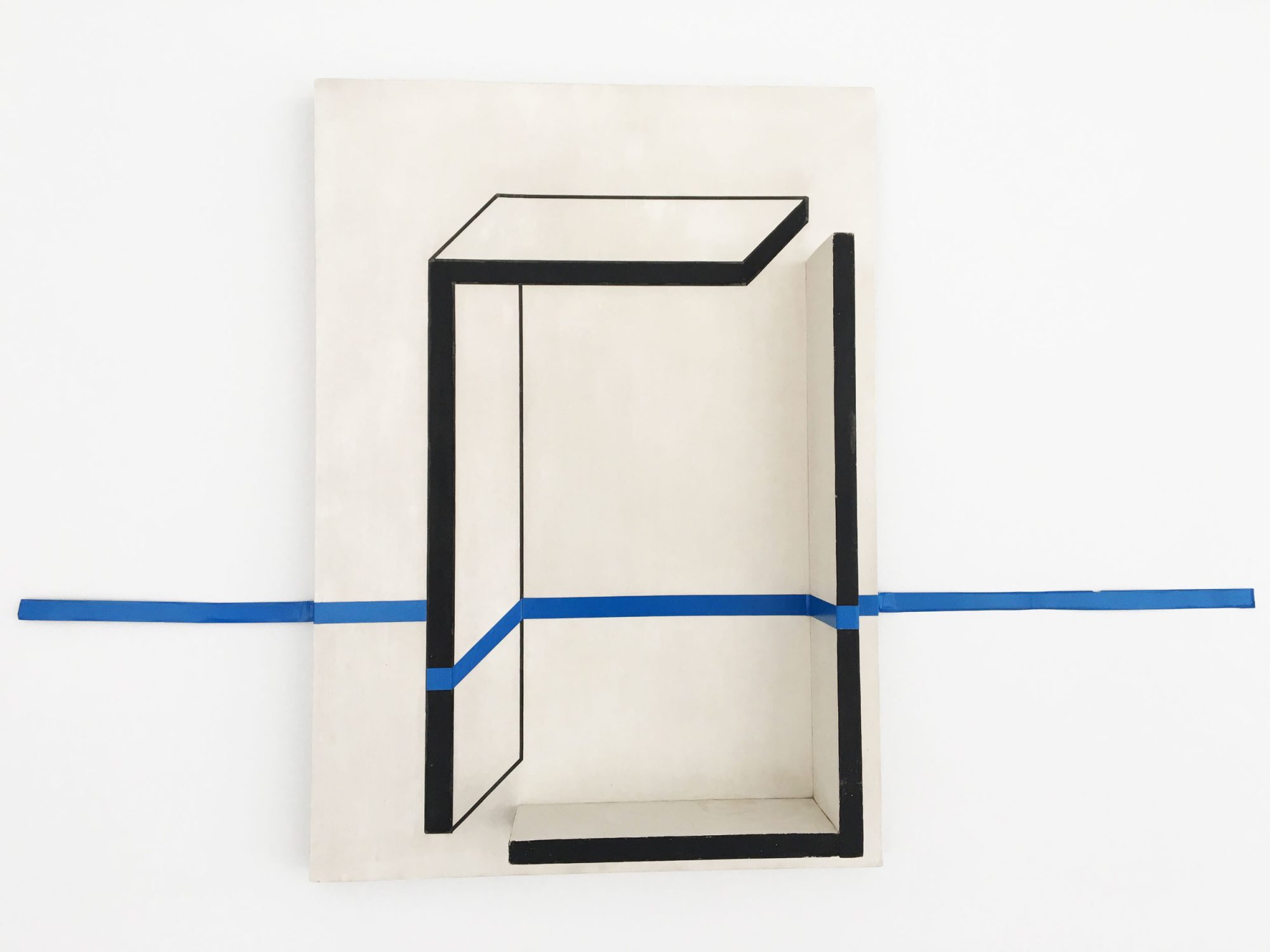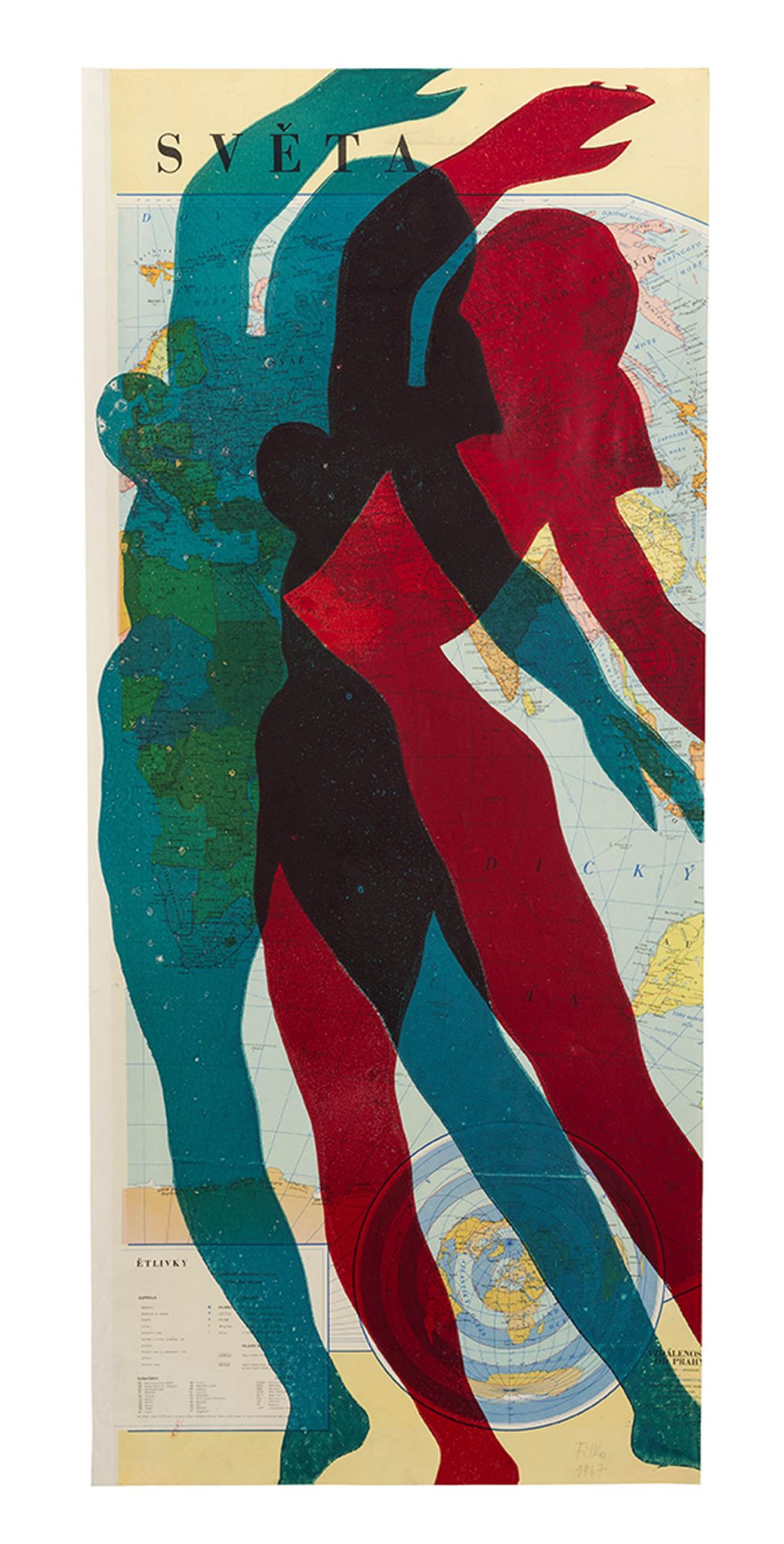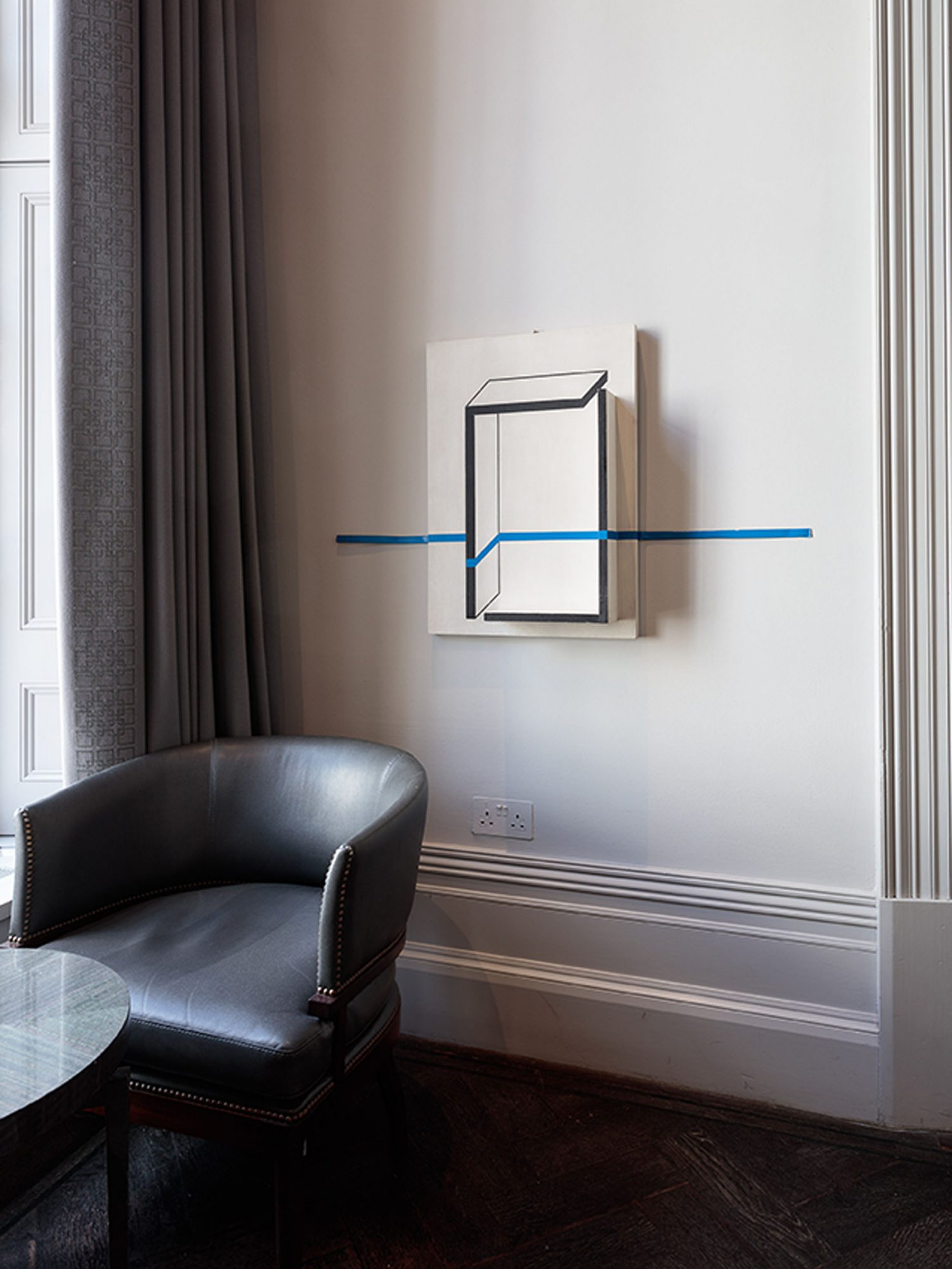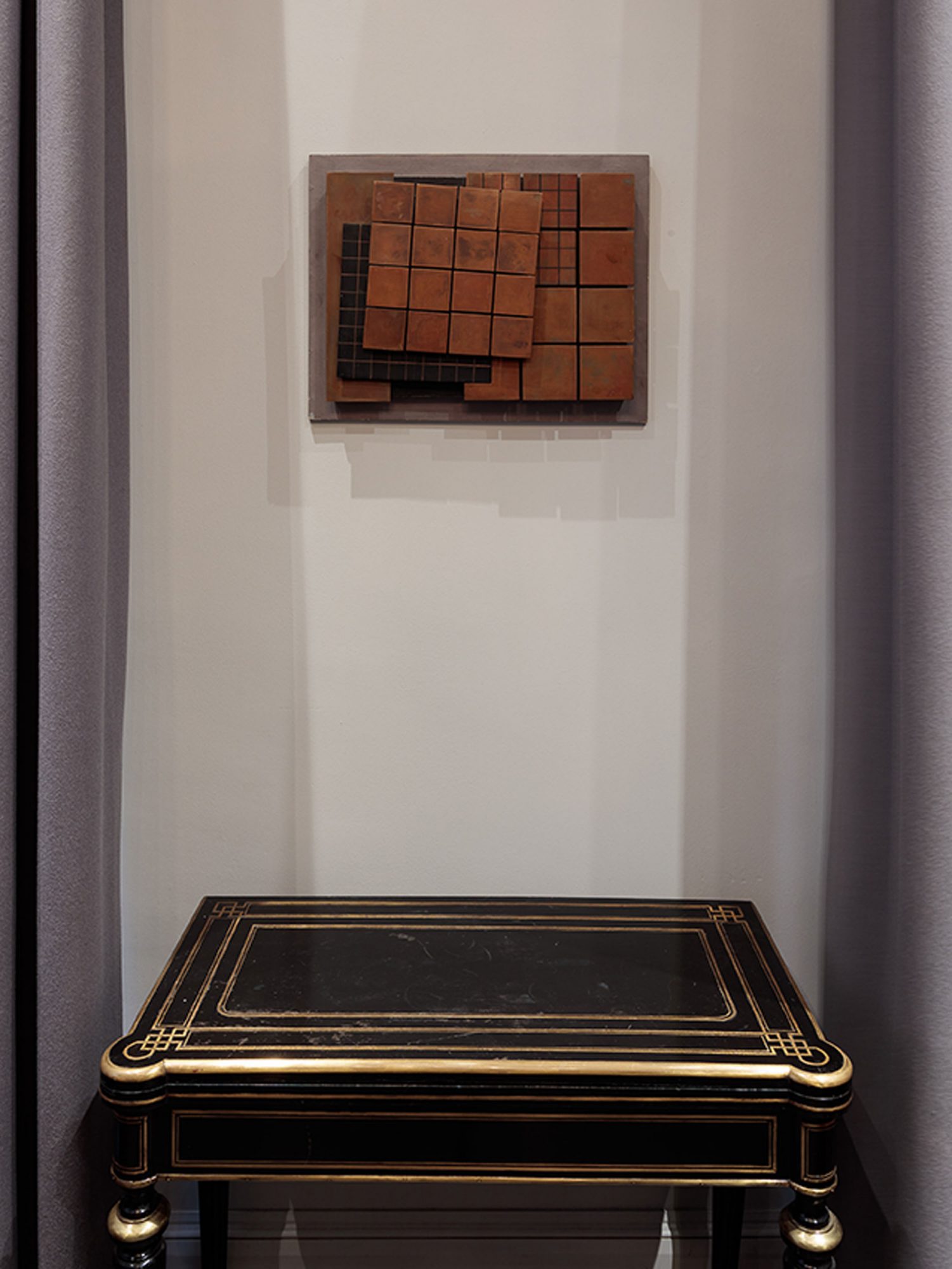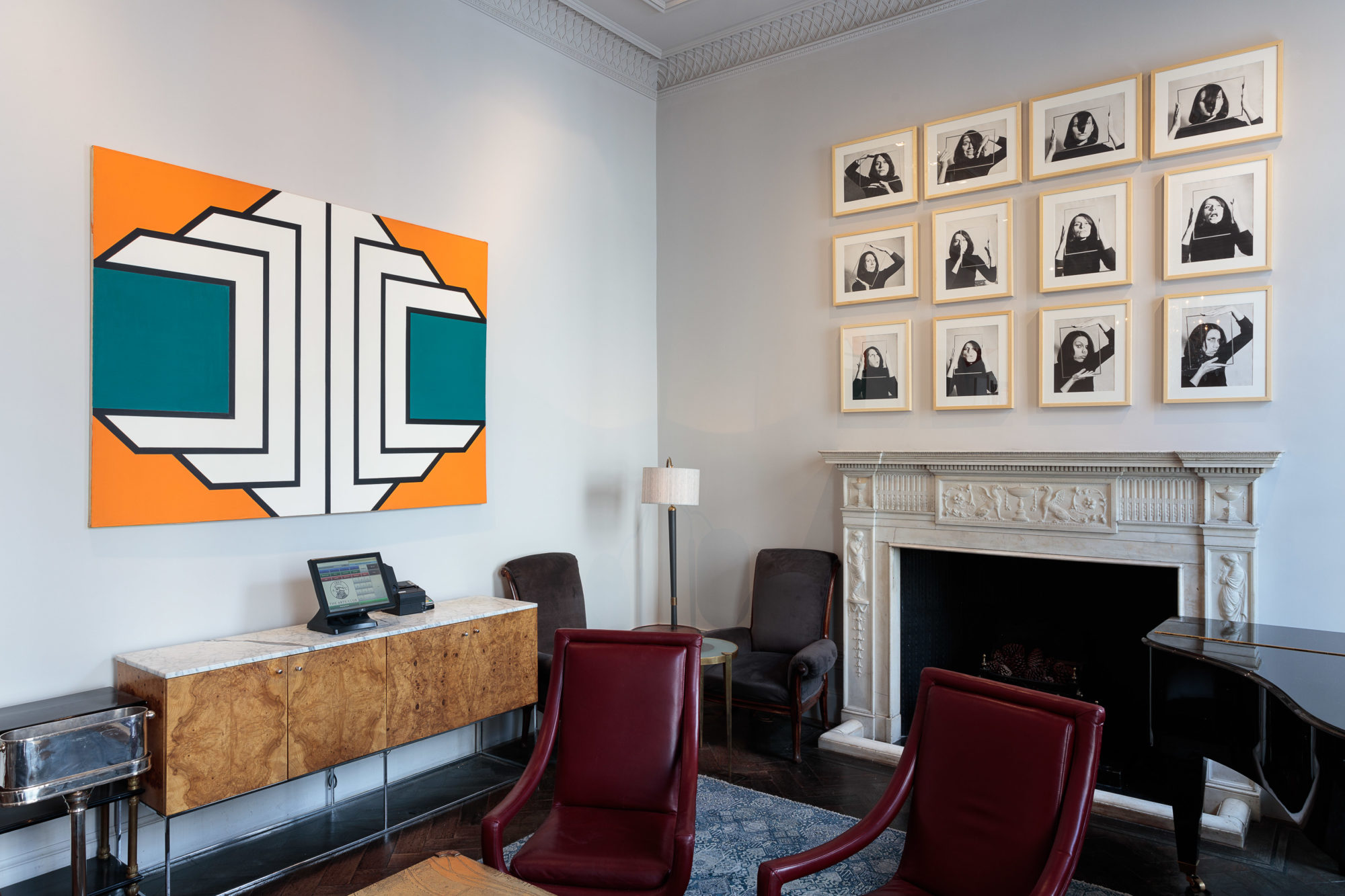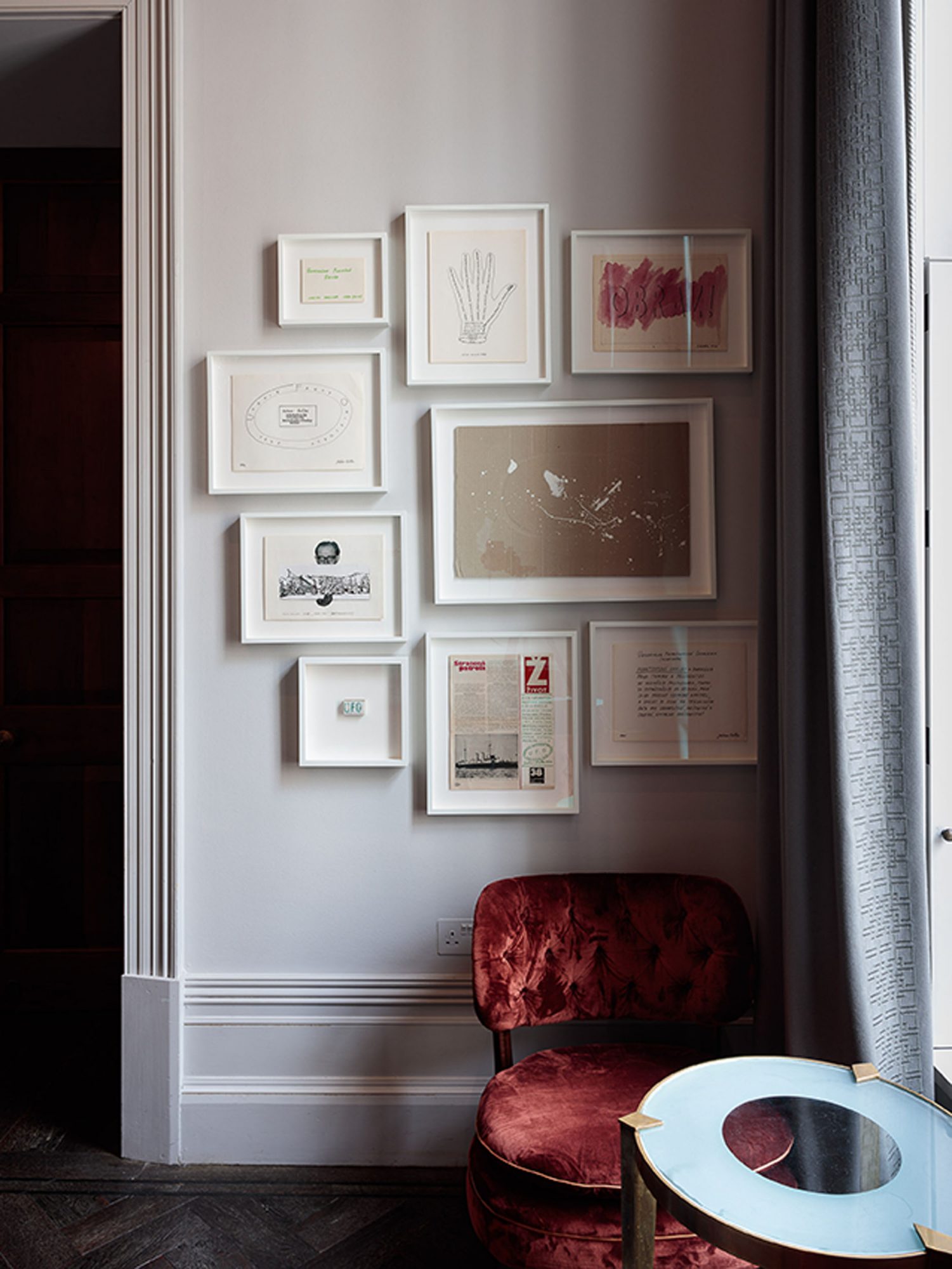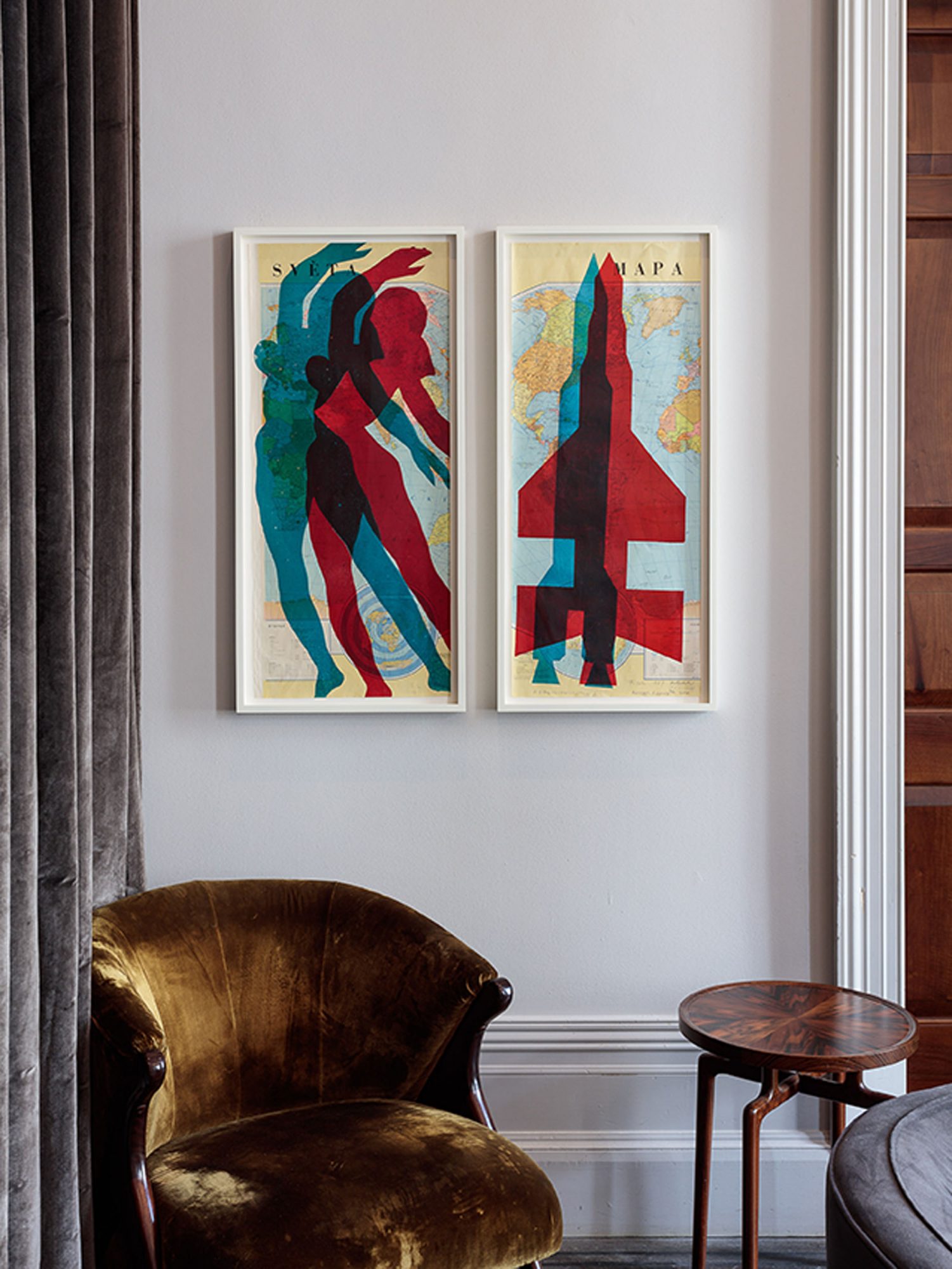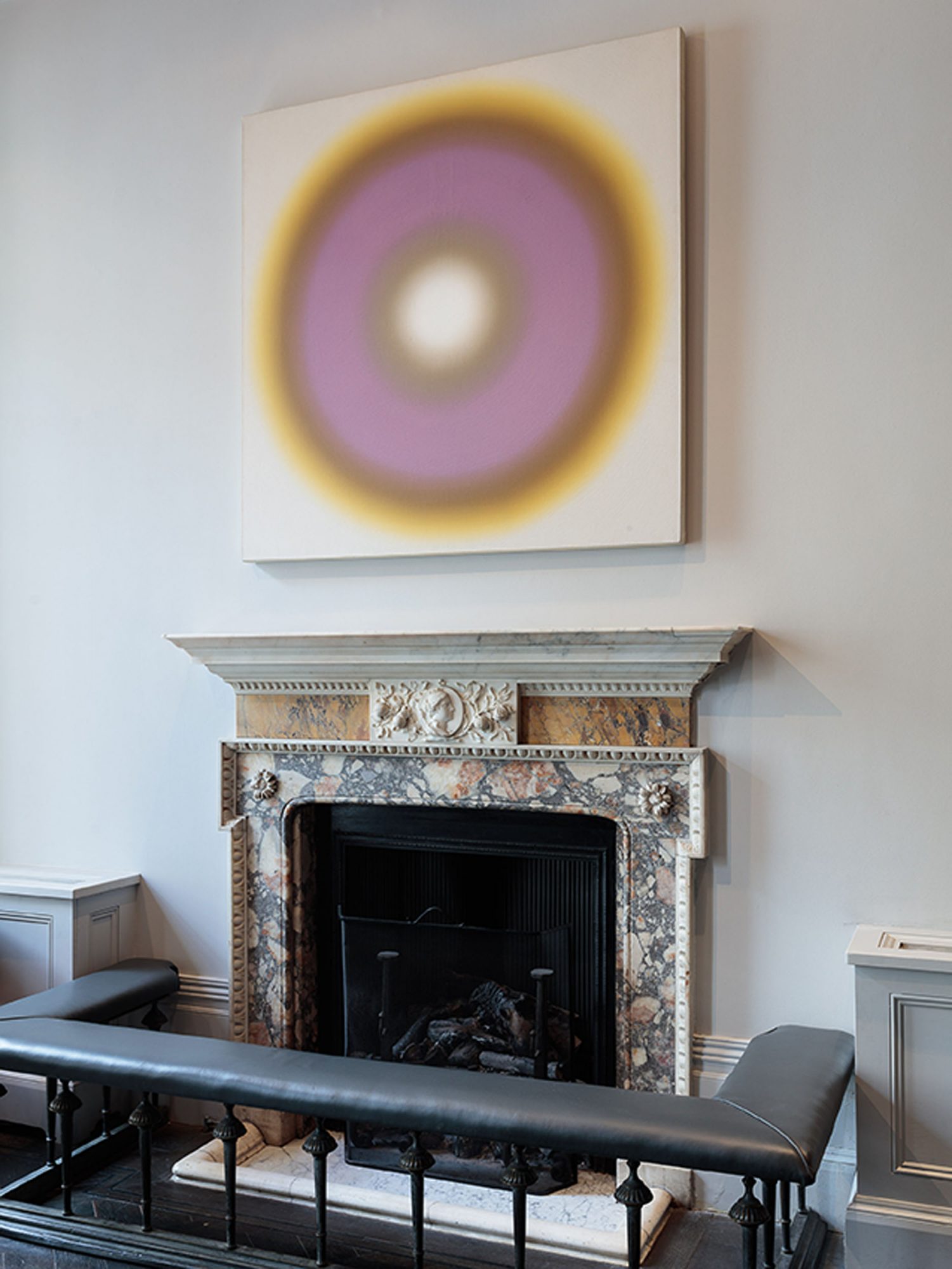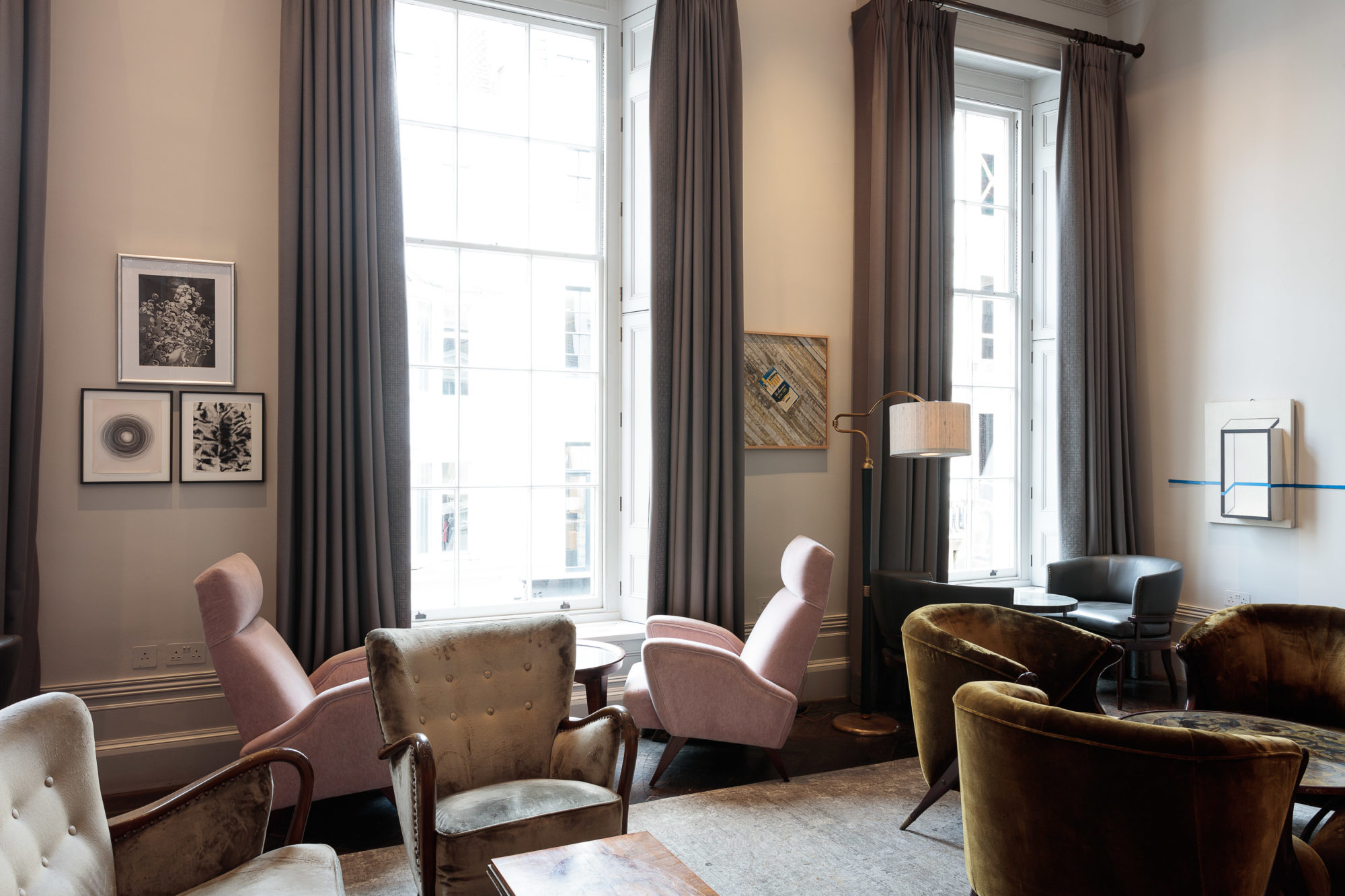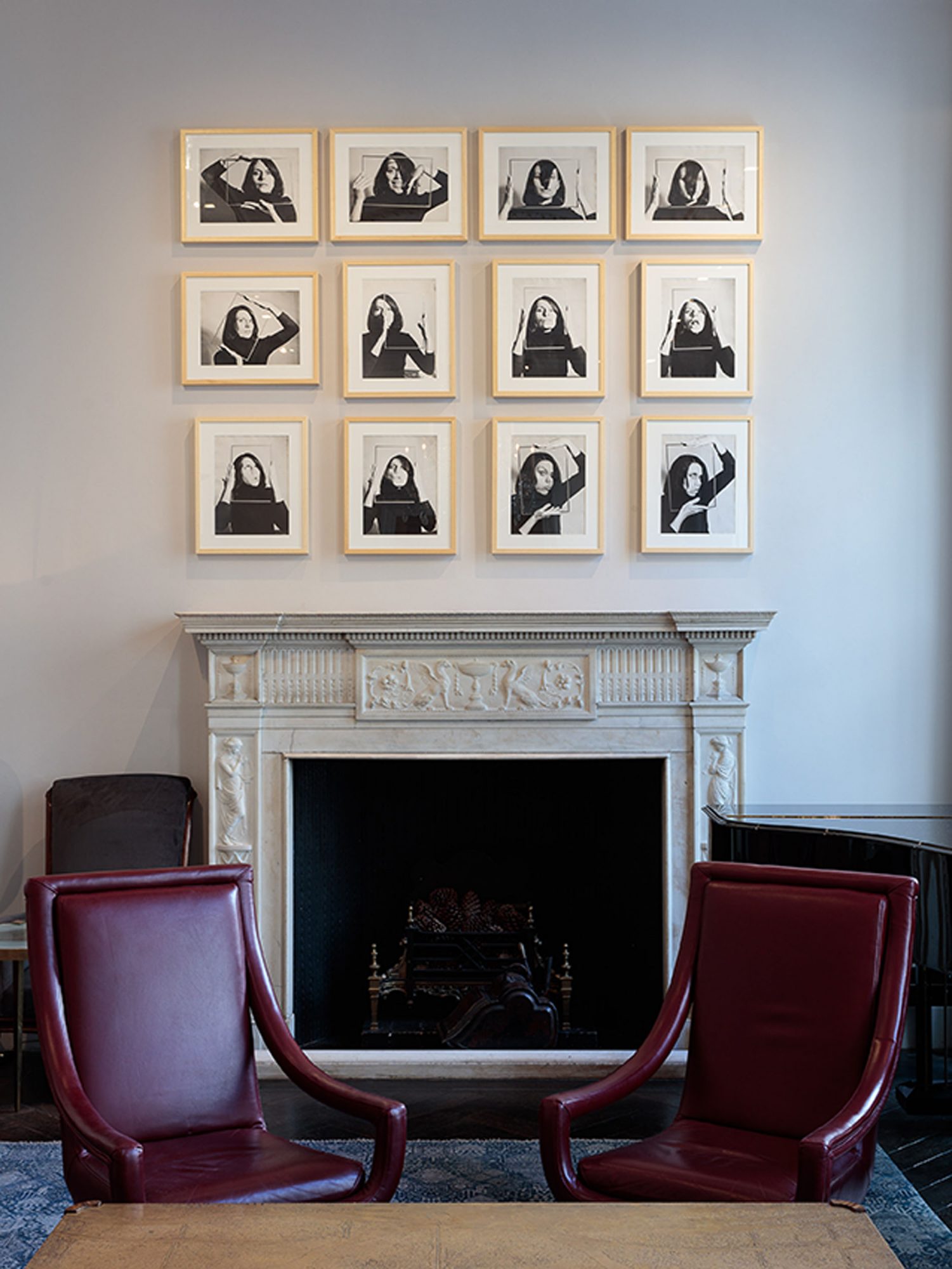Displacements: Avant-Garde Eastern and Central European
art from the Cold War Period
— The Arts Club, London
Installation View: (Boris Bućan & Julije Knifer, Displacements: Avant-Garde Eastern & Central European Art ), The Arts Club

Tap to view slideshow
Displacements is an exhibition of avant-garde art made in Eastern and Central Europe during the Cold War period. The curated selection includes works by pioneering artists such as Imre Bak, Boris Bućan, Tibor Gáyor, Wojciech Fangor, Stanislav Filko, György Jovánovics, Julije Knifer, Běla Kolářová, Július Koller, Attila Kovács, Edward Krasinski, Katalin Ladik, Dóra Maurer and Henryk Stażewski providing insights into their progressive approach to a range of media including actions, painting and photography.
Giving voice to radical art being made in Poland, Hungary, former Czechoslovakia and the former Yugoslavia, the show focuses on important artists who for a long time were overlooked in the West. These artists broke with tradition forming anti-art movements, graphic art collectives and making conceptual interventions and performance pieces. They developed new forms of artistic practice, in response to the socio-political context, with a keen intellectual awareness of art history. While the political situations of the artists in the exhibition are various, all were working within relatively restricted contexts marked by soviet dominance, changes in leadership and economic difficulties.
In spite of constraints, these artists developed an innovative visual language incorporating elements such as bold abstract forms and experimental photography underpinned by an interest in conceptual art. The range of work in the exhibition presents an opportunity to explore this evolution, which also saw the artists responding to new technology and developments in film and graphic design.
Hungarian-born Dóra Maurer (1937), who had a solo show at White Cube Mason’s Yard in 2016, takes inspiration from the relationship between mathematical possibility, chance and freedom. Working with similar themes in geometry and symmetry, Polish artist Wojciech Fangor (1922-2015) is known for his bold, modernist paintings and posters. Disillusioned with art being used as a medium for propaganda, Fangor found artistic freedom in experimenting with form, colour and light.
The work of Ukrainian-born Edward Krasinski (1925-2004) reflects the experimental spirit of an epoch marked by challenges to tradition and authority. Krasinski aspired to reduce sculpture down to a simple line. His conceptual and dynamic sculptures can also be seen in his first UK retrospective at Tate Liverpool from 21 October 2016 – 5 March 2017.
Slovak artist Július Koller (1939-2007) did not align himself to a specific art movement and was fervently anti-academic. His conceptual playfulness is evidenced by his choice of simple, ready-made objects, which he then re-appropriates with complex meanings.
Czech photographer Běla Kolářová (1923-2010) began experimenting with assemblages in the 1960s, moving away from traditional methods of photography. In 1961 she invented the ‘artificial negative’; using fragments of everyday life found inside her home such as hair, pencils, matches and food, Kolářová pressed these everyday objects into a layer of paraffin on photographic paper and then exposed the impressions.
Croatian artist and graphic designer Boris Bućan (1947) belonged to The New Art Practice generation of artists who began combining visual art with technological advancements. In his series of fifty paintings Bućan Art (1972), recently featured in Tate Modern’s exhibition The World Goes Pop (2015-16), Bućan replaces highly recognisable brand logos with the word ‘art’ to comment on the spread of consumerism in former Yugoslavia at the time.
Hungarian-born artist Imre Bak (1939) was part of a group of young ‘self-educated’ artists during the 1960s who sought to depart from the muted palettes of Hungarian realist painters at the time. Inspired by his travels to Russia and Europe, Bak used the bold colours of Impressionism and the dynamic forms of Abstraction as his inspiration. The artist created bright, non-figurative paintings, experimenting with stark geometric forms and pure, flat colour planes. Tate has recently acquired Imre Bak’s piece entitled Good Bad (1973).
Polish painter Henryk Stażewski (1894-1988) was a pioneer of the classical avant-garde of the 20s and 30s, proponent of the Constructivist movement and a founder of the Geometric Abstract art movement of the 60s, 70s and 80s. His geometrical abstract works consist of reliefs and moveable parts shifting gradually from black and white to colour.
Hungarian-born artist Tibor Gáyor (1929), the husband of Dóra Maurer, graduated in architecture from the Technical University in Budapest. He became well known for his works exploring tectonic concepts and his later series which uses a 4×4 grid to create forms fluctuating between two-dimensional and three-dimensional space. His work recently appeared in the show Lares et Penates at Carl Kostyál, London.
The Arts Club curators bring together a selection of artists from this era that have previously been overlooked in the canon of art history and are gaining increased recognition internationally.
The exhibition is curated by Pernilla Holmes and Amelie von Wedel from Wedel Art. The Arts Club would like to thank Fundacja Galerii Foksal; The Mayor Gallery; Katherine Kostyál/White Cube, Austin Desmond Fine Art, Carl Kostyál Gallery; Matthew Stephenson; Galerie Frank Elbaz, and Jonathan Lourie.
